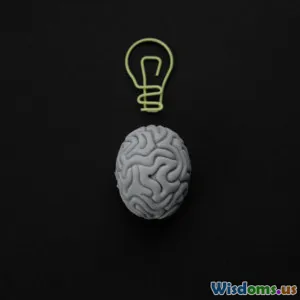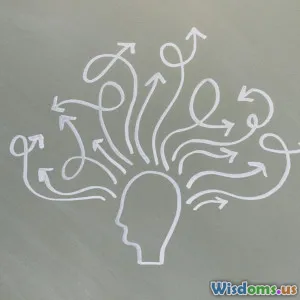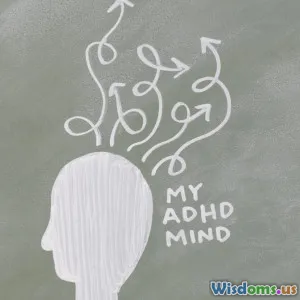
Understanding the Psychology of Dreams
8 min read Delve into the psychology of dreams and discover how brain science unravels their mysteries and meanings. (0 Reviews)
Understanding the Psychology of Dreams: Insights from Brain Science
Dreams have fascinated humans since ancient times, weaving an enigmatic web of mystery, symbolism, and intrigue. Why do we dream? What does the brain do when it crafts these fleeting, surreal experiences? How can understanding the psychology of dreams unlock secrets about our minds and awake selves?
This article dives deep into the science and psychology of dreams, exploring the latest insights from neuroscience, psychology, and real-world examples. You’ll come away equipped with a comprehensive understanding of what dreams really mean and why they matter.
The Science Behind Dreams: A Brief Overview
Dreams predominantly occur during the Rapid Eye Movement (REM) stage of sleep, a period characterized by increased brain activity resembling wakefulness. This paradox of a sleeping yet active brain is what gives rise to vivid dream experiences.
Neuroscientist J. Allan Hobson posited the "Activation-Synthesis" model in the 1970s, suggesting that dreams arise from the brain’s attempt to make sense of random neural firing, particularly in the brainstem. While influential, this doesn't fully account for the emotional richness and narrative structure we associate with dreams.
Recent brain imaging studies reveal that areas like the limbic system (amygdala and hippocampus), which govern emotions and memory, light up during REM sleep. This indicates our dreams might be a complex interplay between memory processing and emotional regulation.
Example: A study published in the Journal of Neuroscience (2017) demonstrated increased activity in the hippocampus during REM sleep, which supports the theory that dreaming consolidates emotional memories.
Psychological Perspectives: What Dreams Reveal About Our Inner Worlds
1. Freud’s Psychoanalytic Interpretation
Sigmund Freud famously asserted that dreams are the "royal road to the unconscious." According to Freud, dreams represent repressed desires, unresolved conflicts, and hidden emotions seeking expression through symbolic language.
For instance, dreaming of flying might symbolize a desire to escape restrictions, while water often relates to emotions. Freud’s interpretation emphasized unconscious wish-fulfillment, urging dream analysis as therapeutic.
2. Jungian Dream Analysis
Carl Jung challenged Freud’s reductionist model, proposing that dreams serve as messages from the collective unconscious—a universal reservoir of archetypes and symbols.
Jung saw dreams as a way for the psyche to balance itself and promote self-awareness. He introduced concepts like "shadow" (unacknowledged aspects of personality) appearing symbolically in dreams, helping individuals integrate these traits.
3. Contemporary Cognitive Theories
Modern psychologists view dreams as reflections of our waking cognitive processes, often influenced by daily experiences, fears, or hopes. The "continuity hypothesis" states dreams mirror waking life concerns, acting as a mental rehearsal.
Example: Dream studies have shown that students often dream about exams or studying during periods of intense preparation, demonstrating how recent experiences affect dream content.
The Role of Dreams in Emotional Regulation and Problem Solving
Dreaming isn’t just a passive process; it actively contributes to mental health and problem-solving.
-
Emotional Processing: During dreams, particularly nightmares, the brain processes traumatic or stressful events. This processing helps reduce emotional intensity and fosters resilience.
-
Creativity and Problem-Solving: Famous innovators, from Paul McCartney composing "Yesterday" in a dream to Nobel laureate Otto Loewi conceptualizing neurotransmission, demonstrate dreams' potential to fuel creativity and novel ideas.
A study published in Nature Communications (2019) confirmed that REM sleep enhances insight and problem-solving abilities by fostering connections between remote ideas.
Common Dreams and Their Psychological Significance
Dreams often contain recurring themes, reflecting universal human experiences.
- Falling: Often interpreted as a loss of control or insecurity.
- Being Chased: May indicate avoidance of confronting a situation or emotion.
- Teeth Falling Out: Linked to anxieties about self-image or powerlessness.
Interpreting dreams requires context and self-reflection; no universal key applies across all individuals.
How to Harness Dreams for Personal Growth
Understanding your dreams can be a valuable tool for self-awareness and emotional well-being.
1. Keep a Dream Journal
Recording your dreams immediately after waking enhances recall and helps identify patterns or messages.
2. Reflect and Analyze
Review dreams for recurring symbols or emotions. Question what life situations parallel the dream themes.
3. Consult Professionals
Psychologists trained in dream analysis can assist in unpacking complex or distressing dreams.
4. Practice Mindfulness and Dream Incubation
Techniques like meditation improve dream recall. Dream incubation involves consciously thinking about a problem before sleep to stimulate related dreams.
Cutting-Edge Research: What’s Next in Dream Science?
Advancements in brain imaging, such as high-resolution fMRI and neural decoding techniques, are beginning to reveal the neural correlates of specific dream content.
For example, researchers at Kyoto University reconstructed rudimentary visual images from dreams, showing a scientific path toward "reading" dream content without verbal reports.
Additionally, the integration of Artificial Intelligence with neurodata is opening new frontiers for personalized dream analysis and therapeutic applications, especially for disorders like PTSD.
Conclusion
Dreams remain one of the most compelling frontiers bridging brain science and psychology. Far from random noise, they represent rich tapestries of memory, emotion, and cognition working beneath conscious awareness.
By understanding the psychological frameworks and neuroscience behind dreaming, we gain insight into our subconscious mind, emotional health, and creativity. Whether through psychoanalytic interpretation or the latest brain imaging, dreams invite us on a journey of self-discovery.
Next time you awaken from a vivid dream, pause to consider: what hidden messages lie beneath the veil of sleep, waiting for you to uncover?
Embrace your dreams—they may illuminate more about your inner world than you ever imagined.
Rate the Post
User Reviews
Popular Posts




















